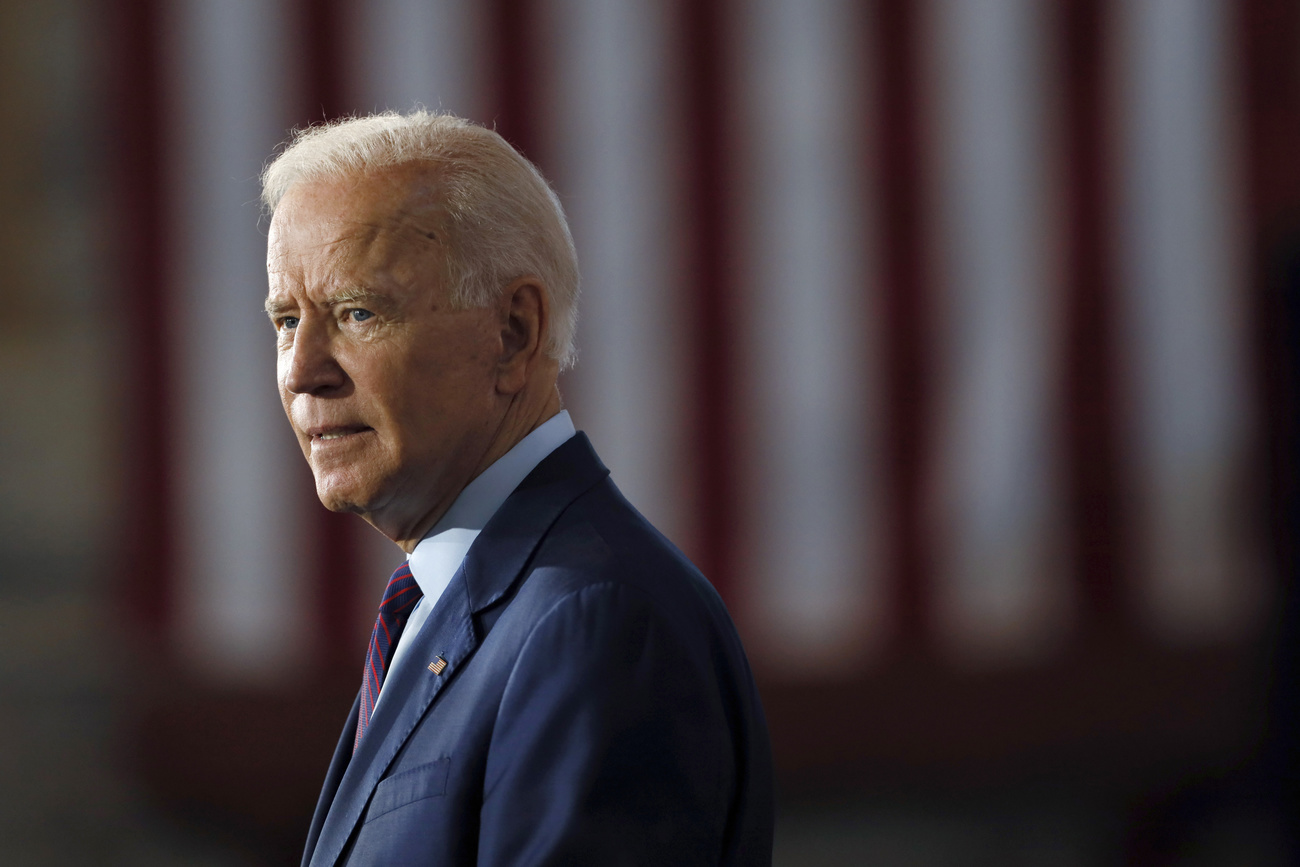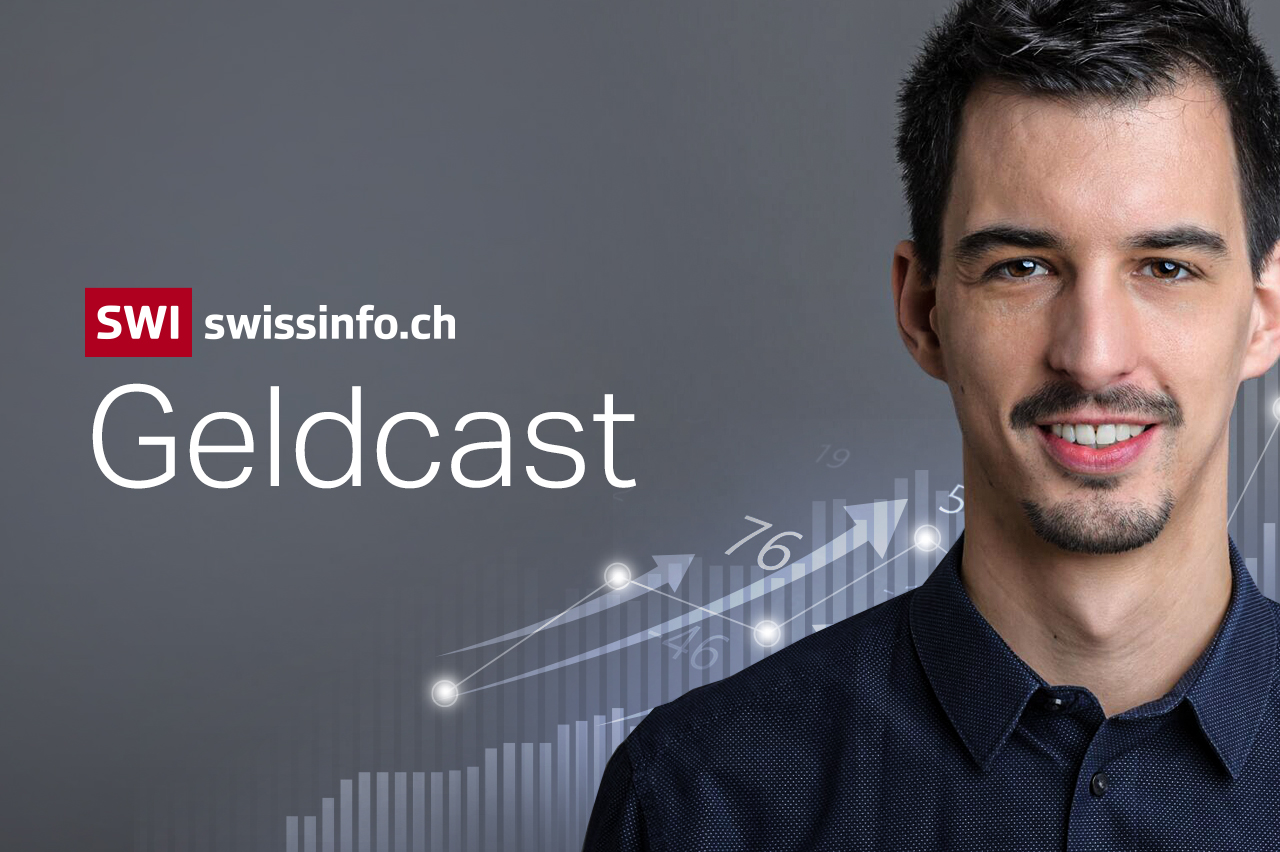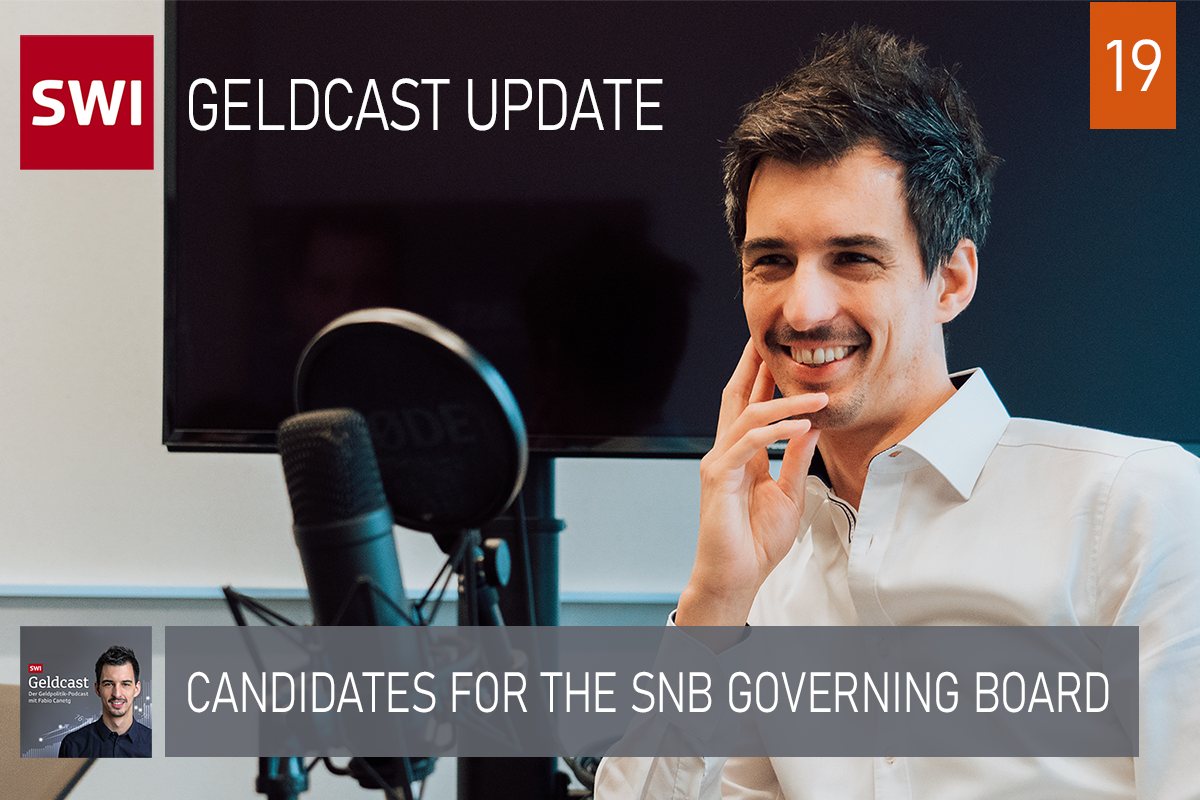Geldcast Update: Exchange rate and inflation lessons from Denmark

Europe’s annual inflation rate has hit 4.9%. But this doesn’t seem to bother Signe Krogstrup, governor of the Danish central bank, too much. She talks to SWI swissinfo.ch about inflation and exchange rate policy in the latest Geldcast podcast.
“We don’t have an inflation target,” explains Signe Krogstrup, governor of the Danish central bank. “Our goal is a stable exchange rate.”
The Danish central bank’s monetary strategy is quite different to that of the US Federal Reserve, the European Central Bank (ECB) or the Swiss National Bank (SNB), which all have an inflation target: 2%.
The goal of the Danish central bank is to keep its national currency – the Danish krone – stable at 7.46038 krone per euro, plus or minus 2.25%.
Stimulating the economy
Denmark introduced a fixed exchange rate policy in 1982. A few years earlier, the Nordic country tried to stimulate its economy on several occasions via devaluations.
This led to Danish exports becoming cheaper abroad. “But that only stimulates the economy once,” explains Krogstrup. After that, the markets expect further devaluations. The result is macroeconomic imbalances, as the example from Denmark shows.
“Before Denmark set its exchange rate, unemployment and inflation were very high,” says Krogstrup.

Has the fixed exchange rate policy improved these numbers? Not in the short term, says the central banker. She describes “high costs” incurred at the beginning of the new strategy. One cause for these was that neighbouring Sweden devalued its currency just a month after the Danish exchange rate was fixed. That made Danish goods more expensive in Sweden and it made Swedish competing products cheaper in Europe.
“In the medium term, however, the alignment of the exchange rate came with significant advantages,” says Krogstrup. Domestic prices, for example, remained stable for years.
Impact of Swiss exchange rate ceiling
The Danish bank’s exchange rate policy only really experienced serious difficulties once: in January 2015, when the Swiss National Bank surprisingly lifted its minimum exchange rate ceiling against the euro. At the time international investors bet that the Danish central bank would also allow the krone to appreciate.

More
Swiss and US central banks: same purpose, different paths
“At the time there was huge demand for the Danish krone,” says Krogstrup. In order to defend the exchange rate target, the national bank printed around 300 billion krone – the equivalent of CHF42 billion. The bank had to intervene over the period of one month to stabilise the exchange rate and ease the pressure, explains the central banker.
What would have happened if the central bank had spent a lot more money to defend the exchange rate target? That was not an issue, says Krogstrup.
“I doubt we would have had a political problem if we had intervened more,” she notes. Denmark’s fixed exchange rate policy enjoys broad support in the country, adds Krogstrup.
Studies and work in Switzerland
The 49-year-old mother of two, who became governor of the Danish central bank in November 2020, is an expert on currency issues. In the early 2000s she studied at the Geneva Graduate Institute, where she completed her PhD in International Economics in 2003.

“Economic theory was not an end in itself there, but an instrument for making the best policy for society,” says Krogstrup. At the time, she was inspired by the French economist Charles Wyplosz, who is an emeritus professor of International Economics at the Graduate Institute and a founding member of the “SNB Observatory”, which is critical of the Swiss central bank.
After completing her studies at the Graduate Institute, Krogstrup moved to the SNB in 2007. There she became a speechwriter for former SNB President Philipp Hildebrand.
“At the beginning I had no idea how to write speeches,” says Krogstrup with a laugh. But she learned quickly. In 2011 she became vice director of the monetary policy analysis department, which was instrumental in the introduction of the minimum exchange rate. “Indirectly”, she adds. It had to remain rather vague but there was a great deal of “very good analytical work” done at the SNB before the exchange rate limit was introduced.
The biggest monetary policy difference between Switzerland and Denmark is in exchange rate outlook, says Krogstrup.
“With the Swiss franc there is uncertainty about where the future exchange rate will be,” she says. “There is no such uncertainty in Denmark.”
Click on the following Spotify embed below for the 27-minute Geldcast podcast interview in English between Signe Krogstrup and monetary economist and business journalist Fabio CanetgExternal link.
You can also find it on SpotifyExternal link and Apple PodcastsExternal link.
From stock exchanges and bitcoin to inflation and monetary policy – the Geldcast update features the latest from the world of international finance. Clear and entertaining for everyone who wants to stay up to date. The podcast is hosted by monetary economist and business journalist Fabio CanetgExternal link.

More
The Geldcast update

In compliance with the JTI standards
More: SWI swissinfo.ch certified by the Journalism Trust Initiative











Join the conversation!